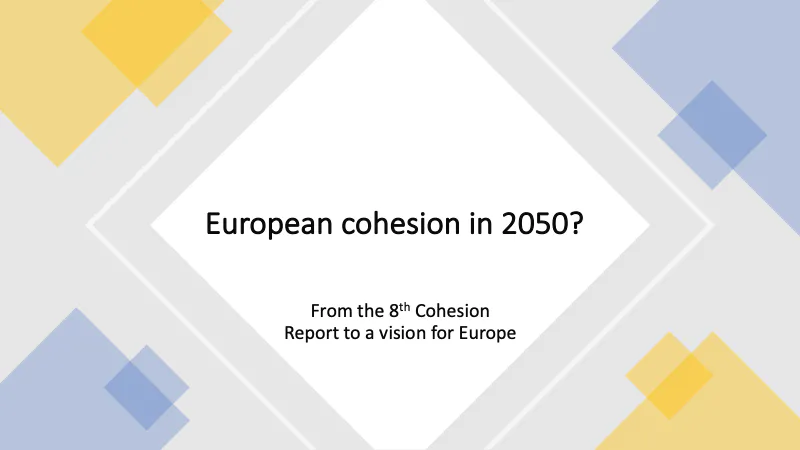European Cohesion in 2050?

February 2022
In February the European Commission published the 8th Cohesion Report under the heading of ‘Cohesion in Europe towards 2050’ (Opens in a new window). As usual for Cohesion Reports, the report provides a comprehensive overview on the state of play in regional development and key cohesion challenges in Europe.
This covers a wide range of topics, including
the COVID-19 pandemic’s asymmetric impacts on local and regional development,
regional competitiveness and the risk of ‘development traps’, the performance of the less developed regions against the more developed ones and of rural areas compared to cities,
the consequences of climate change the loss of biodiversity and the need to act upon these,
the importance of good connectivity in Europe, the need to shift towards sustainable mobility, and the potential of rail transport and digital services,
the social inequalities in Europe, between different parts of the EU, between urban and rural areas, between EU migrants and non-EU migrations, or between men and women,
the uneven demographic outlooks, also linked to variations in life expectancy, satisfaction with life, access to services of general interest, and residents’ trust in governance bodies,
the importance and territorial variations of good and trusted governance and e-governance, and
Cohesion policy investments and impacts.
These are just a few features addressed in the Cohesion Report. Each of them reveals a wealth of relevant information and findings on decreasing or increasing disparities, development trends and future potential and challenges. The report offers a good complement to Eurostat’s annual yearbooks and goes into much more depths in many areas.
To read this post you'll need to become a member. Members help us fund our work to ensure we can stick around long-term.
See our plans (Opens in a new window)
Already a member? Log in (Opens in a new window)


